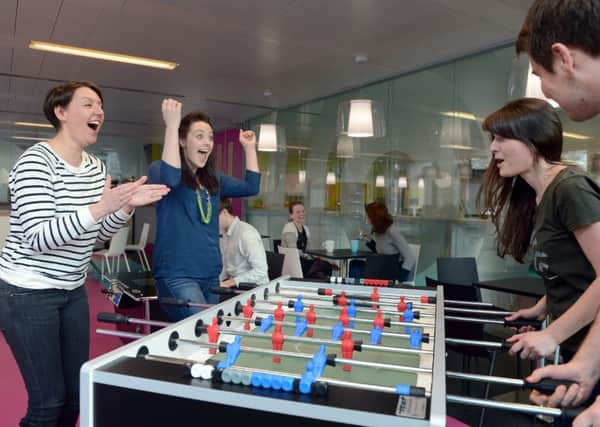Cameron Stott: Going into the office will remain relevant


A three mile walk to work in St Andrew Square before a 9am meeting might also have been out of place. Stranger still would be running along the banks of the Union Canal – surely considered the reserve of the hard-core fitness fanatic.
Fast forward to 2017 and changes to our lifestyle have had a big impact on how office buildings and the spaces inside them are designed. The smartest spaces increasingly reflect modern preferences for healthier working lives, accommodating new commuting choices to keep shared working spaces relevant.
Advertisement
Hide AdAdvertisement
Hide AdOnce a feature in only a few office developments, shower facilities of similar standards to health clubs are now a mainstay in any office refurbishment or new-build in Edinburgh, alongside safe cycle storage.
Similar to our increasingly high expectations of internet speed, we lead busy lives which need immediacy. Work accessibility is increasingly important for staff, resulting in a growing desire for people to work in the city centre, close to retail centres, restaurants and bars. This has also made it easier to ditch the car and reach the city by public transport.
If the way we get to work has shifted, how we actually work has undergone a revolution. In the last 25 years, the world has seen a technology upheaval transforming our homes, our lives and, indeed, our workplaces.
E-mail, video conferencing or Skype, home-working and smart phones have altered the concept of nine-to-five working, making the office a much more fluid working environment. It begs the question – how important are offices, and why do they still exist?
In response, occupiers are being smarter about creating environments that fuel productivity and attract the right talent. Get it right and your office can be a key weapon in the war for talent. Get it wrong through under-investment and lack of planning and the office can become your totem of failure.
This is especially true of Edinburgh, where the technology sector has boomed over recent decades, developing space to accommodate a new generation with different ways of working has been a challenge which developers have met.
In recent years, corporate occupiers in Edinburgh have found a solution to make the office relevant – agile workspaces – which go beyond the traditional open plan office, to take into consideration how people work in 2017. For example, quiet booths for confidential calls; collaboration areas; relaxation space; hot-desk space with laptop docking stations; dedicated eating spaces; inspirational zones, and so on.
This is how our Unicorns work, FanDuel and Skyscanner. But it is also being increasingly embraced by the more conventional professional and financial sector businesses.
Advertisement
Hide AdAdvertisement
Hide AdAs firms continue to engage in an increasingly fierce war for talent, you can be sure that the office will still play a major role for businesses in 25 years, even if we’re not still using the term, “agile workspaces” to describe them.
Cameron Stott is director at JLL in Scotland